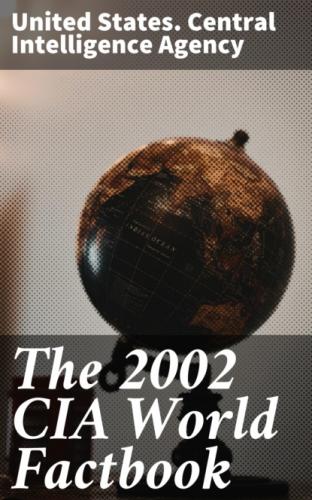Imports - commodities: capital goods, raw materials and semi-manufactures, chemicals, petroleum, food
Imports - partners: US 24%, Argentina 17%, Brazil 15%, Chile 9%, Peru 5 (2000)
Debt - external: $5.8 billion (2001 est.)
Economic aid - recipient: $588 million (1997)
Currency: boliviano (BOB)
Currency code: BOB
Exchange rates: bolivianos per US dollar - 6.8613 (January 2002), 6.6069 (2001), 6.1835 (2000), 5.8124 (1999), 5.5101 (1998), 5.2543 (1997)
Fiscal year: calendar year
Communications Bolivia
Telephones - main lines in use: 327,600 (1996)
Telephones - mobile cellular: 116,000 (1997)
Telephone system: general assessment: new subscribers face bureaucratic difficulties; most telephones are concentrated in La Paz and other cities; mobile cellular telephone use expanding rapidly domestic: primary trunk system, which is being expanded, employs digital microwave radio relay; some areas are served by fiber-optic cable; mobile cellular systems are being expanded international: satellite earth station - 1 Intelsat (Atlantic Ocean)
Radio broadcast stations: AM 171, FM 73, shortwave 77 (1999)
Radios: 5.25 million (1997)
Television broadcast stations: 48 (1997)
Televisions: 900,000 (1997)
Internet country code: .bo
Internet Service Providers (ISPs): 9 (2000)
Internet users: 78,000 (2000)
Transportation Bolivia
Railways: total: 3,691 km narrow gauge: 3,652 km 1.000-m gauge; 39 km 0.760-m gauge (13 km electrified) (1995 est.)
Highways: 2,500 km (including 30 km of expressways) unpaved: Waterways: 10,000 km (commercially navigable)
Pipelines: crude oil 1,800 km; petroleum products 580 km; natural gas 1,495 km
Ports and harbors: Puerto Aguirre (on the Paraguay/Parana waterway, at the Bolivia/Brazil border); also, Bolivia has free port privileges in maritime ports in Argentina, Brazil, Chile, and Paraguay
Merchant marine: total: 36 ships (1,000 GRT or over) totaling 196,399 GRT/320,137 DWT ships by type: bulk 3, cargo 15, chemical tanker 2, container 1, petroleum tanker 13, roll on/roll off 2 note: includes some foreign-owned ships registered here as a flag of Belize 2, China 2, Cuba 1, Cyprus 1, Egypt 1, Honduras 1, Latvia 2, Liberia 2, Panama 1, Saint Vincent and the Grenadines 1, Saudi Arabia 1, Singapore 1, South Korea 3, Switzerland 1, Ukraine 1, United Arab Emirates 5, United States 1 (2002 est.)
Airports: 1,109 (2001)
Airports - with paved runways: total: 13 over 3,047 m: 4 2,438 to 3,047 m: 3 1,524 to 2,437 m: 4 914 to 1,523 m: 2 (2001)
Airports - with unpaved runways: 4 1,524 to 2,437 m: Military Bolivia
Military branches: Army (Ejercito Boliviano), Navy (Fuerza Naval, includes Marines), Air Force (Fuerza Aerea Boliviana), National Police Force (Policia Nacional de Bolivia)
Military manpower - military age: 19 years of age (2002 est.)
Military manpower - availability: males age 15-49: 2,062,321 (2002 est.)
Military manpower - fit for military service: males age 15-49: 1,343,755 (2002 est.)
Military manpower - reaching military age annually: males: 90,120 (2002 est.)
Military expenditures - dollar figure: $147 million (FY99)
Military expenditures - percent of GDP: 1.8% (FY99)
Transnational Issues Bolivia
Disputes - international: continues to demand a sovereign corridor to the South Pacific Ocean since the Atacama region was lost to Chile in 1884
Illicit drugs: world's third-largest cultivator of coca (after Colombia and Peru) with an estimated 19,900 hectares under cultivation in July 2001, stable from July 2000 levels; intermediate coca products and cocaine exported to or through Colombia, Brazil, Argentina, and Chile to the US and other international drug markets; eradication and alternative crop programs under the QUIROGA administration has kept pace with farmers' attempts to increase cultivation after significant reductions in 1998 and 1999
This page was last updated on 1 January 2002
========================================================================
Burma
Introduction
Burma
Background: Despite multiparty elections in 1990 that resulted in the main opposition party winning a decisive victory, the ruling military junta refused to hand over power. Key opposition leader and Nobel Peace Prize recipient AUNG SAN SUU KYI, under house arrest from 1989 to 1995, was again placed under house detention in September 2000; her supporters are routinely harassed or jailed.
Geography Burma
Location: Southeastern Asia, bordering the Andaman Sea and the Bay of
Bengal, between Bangladesh and Thailand
Geographic coordinates: 22 00 N, 98 00 E
Map references: Southeast Asia
Area: total: 678,500 sq km land: 657,740 sq km water: 20,760 sq km
Area - comparative: slightly smaller than Texas
Land boundaries: total: 5,876 km border countries: Bangladesh 193 km,
China 2,185 km, India 1,463 km, Laos 235 km, Thailand 1,800 km
Coastline: 1,930 km
Maritime claims: contiguous zone: 24 NM territorial sea: 12 NM continental shelf: 200 NM or to the edge of the continental margin exclusive economic zone: 200 NM
Climate: tropical monsoon; cloudy, rainy, hot, humid summers (southwest monsoon, June to September); less cloudy, scant rainfall, mild temperatures, lower humidity during winter (northeast monsoon, December to April)
Terrain: central lowlands ringed by steep, rugged highlands
Elevation extremes: lowest point: Andaman Sea 0 m highest point:
Hkakabo Razi 5,881 m
Natural resources: petroleum, timber, tin, antimony, zinc, copper, tungsten, lead, coal, some marble, limestone, precious stones, natural gas, hydropower
Land use: arable land: 14% permanent crops: 1% other: 85% (1998 est.)
Irrigated land: 15,920 sq km (1998 est.)
Natural hazards: destructive earthquakes and cyclones; flooding and landslides common during rainy season (June to September); periodic droughts
Environment - current issues: deforestation; industrial pollution of air, soil, and water; inadequate sanitation and water treatment contribute to disease
Environment - international agreements: party to: Biodiversity, Climate
Change, Desertification, Endangered Species, Law of the Sea, Nuclear Test
Ban, Ozone Layer Protection, Ship Pollution, Tropical Timber 83, Tropical
Timber 94 signed, but not ratified: none of the selected agreements
Geography - note: strategic location near major Indian Ocean shipping lanes
People Burma
Population: 42,238,224 note: estimates for this country explicitly take into account the effects of excess mortality due to AIDS; this can result in lower life expectancy, higher infant mortality and death rates, lower population and growth rates, and changes in the distribution of population by age and sex than would otherwise be expected (July 2002 est.)
Age
